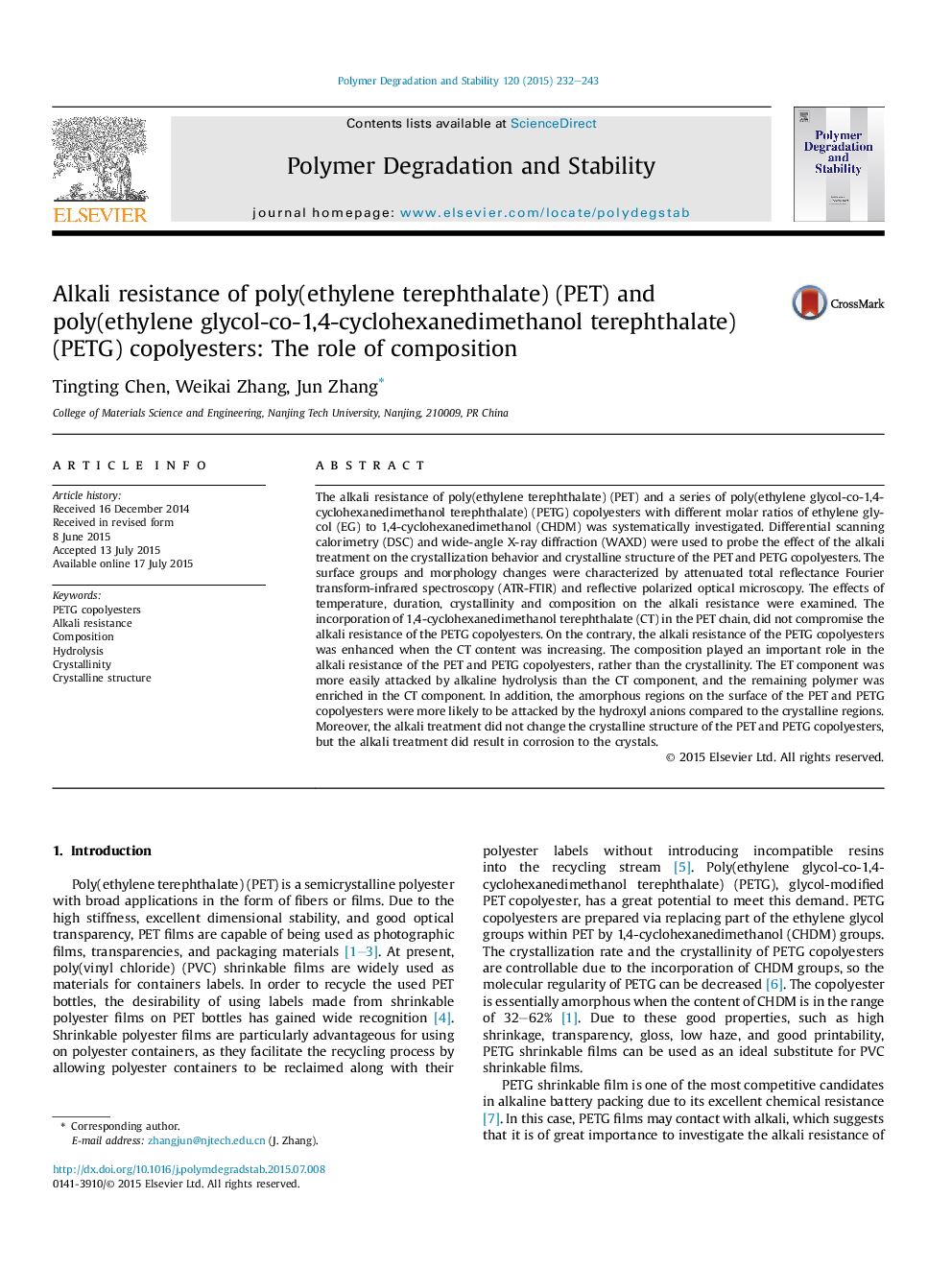| Article ID | Journal | Published Year | Pages | File Type |
|---|---|---|---|---|
| 5201308 | Polymer Degradation and Stability | 2015 | 12 Pages |
The alkali resistance of poly(ethylene terephthalate) (PET) and a series of poly(ethylene glycol-co-1,4-cyclohexanedimethanol terephthalate) (PETG) copolyesters with different molar ratios of ethylene glycol (EG) to 1,4-cyclohexanedimethanol (CHDM) was systematically investigated. Differential scanning calorimetry (DSC) and wide-angle X-ray diffraction (WAXD) were used to probe the effect of the alkali treatment on the crystallization behavior and crystalline structure of the PET and PETG copolyesters. The surface groups and morphology changes were characterized by attenuated total reflectance Fourier transform-infrared spectroscopy (ATR-FTIR) and reflective polarized optical microscopy. The effects of temperature, duration, crystallinity and composition on the alkali resistance were examined. The incorporation of 1,4-cyclohexanedimethanol terephthalate (CT) in the PET chain, did not compromise the alkali resistance of the PETG copolyesters. On the contrary, the alkali resistance of the PETG copolyesters was enhanced when the CT content was increasing. The composition played an important role in the alkali resistance of the PET and PETG copolyesters, rather than the crystallinity. The ET component was more easily attacked by alkaline hydrolysis than the CT component, and the remaining polymer was enriched in the CT component. In addition, the amorphous regions on the surface of the PET and PETG copolyesters were more likely to be attacked by the hydroxyl anions compared to the crystalline regions. Moreover, the alkali treatment did not change the crystalline structure of the PET and PETG copolyesters, but the alkali treatment did result in corrosion to the crystals.
